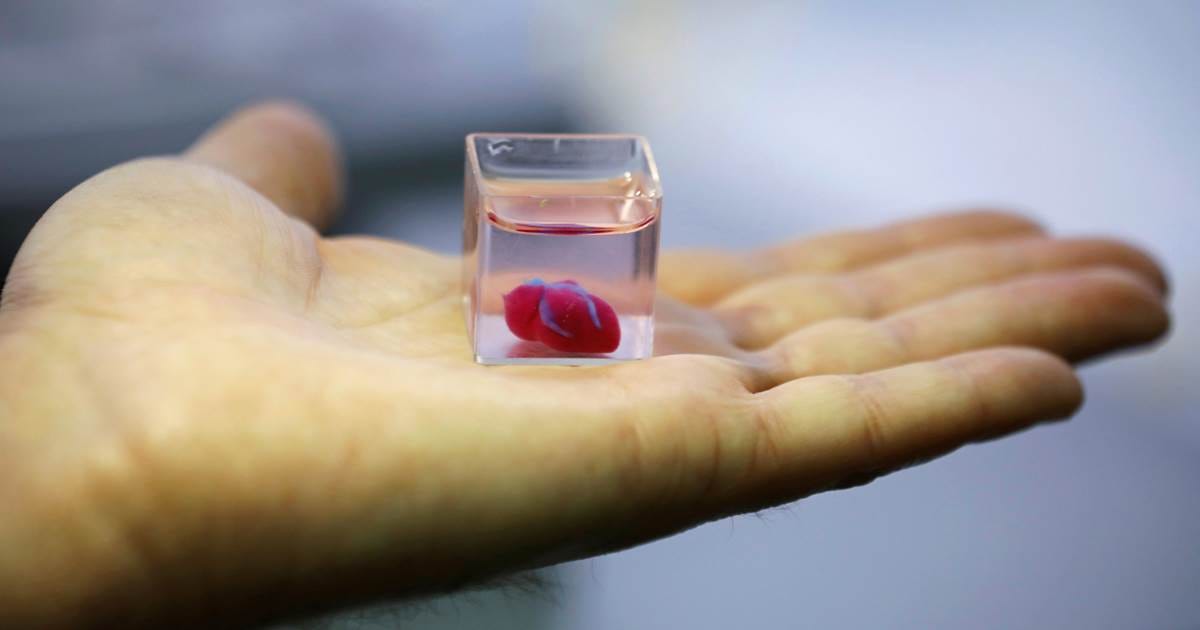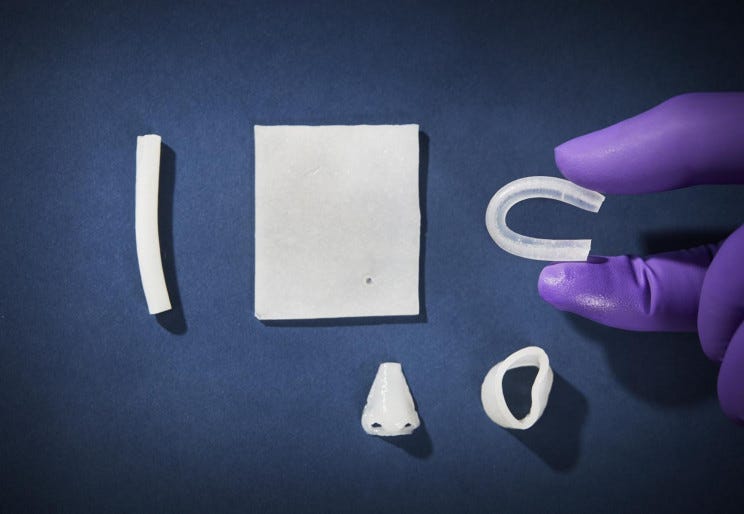Last week we spoke about artificial human tissue that used seaweed, this week I will look at a couple of additional methods for creating artificial human tissue. A robot that assembles Ikea furniture and the incredible range of uses for AI are also featured. Just in case you have not heard enough about Coronavirus I have included a link to thousands of' research papers that will tell you everything that the world currently knows about the family of Coronaviruses.
3D Printed Heart Cells
Over the past couple of years there have been several groups that have developed technologies for printing heart cells. Researchers at Tel Aviv University’s School of Molecular Cell Biology and Biotechnology have successfully printed an entire heart including the cells, blood vessels, ventricles and chambers.
The process required a biopsy of the fatty tissue that surrounds abdominal organs. The cells in the tissue were separated from the rest of the contents (i.e. the extracellular matrix linking the cells) and then reprogramed to become stem cells that have the ability to differentiate into heart cells. The extracellular matrix was processed into a personalized hydrogel that serves as the “printing ink”.
The printed heart is only the size of a rabbit’s heart at the moment however it is “only” a matter of scaling up the technology to print a human heart. The ultimate goal is to heal hearts or engineer new ones for transplant. The use of this technique reduces the risk of rejection by the body.

The next step is for the cells to develop a pumping ability, they currently contract however they need to be able to work together to give the heart pumping capability. The lead researcher speculated that in 10 years leading hospitals may have 3D organ printers and these procedures would be considered routine.
Redesigned Plexiglass as a Human Tissue Replacement
Chalmers University in Sweden has developed a new material based upon plexiglass that may soon replace human tissue in some applications. They were trying to develop a replacement for bone however the material that they developed turned out to be soft, flexible and extremely elastic.
The new material may have applications where high elasticity is required in medical uses. The first application they are looking at is urinary catheters. The material can be constructed in a way that prevents bacteria from growing on the surface. This will reduce the need for antibiotics and it can be injected via keyhole surgery. As with many of these types of cell replacement technologies, it can also be 3D printed into the shape and size required.

It is possible that the material may also be used as a replacement for cartilage. Additionally the material contains 3 dimensionally ordered nano pores that can also be loaded with medicine. This allows it to be used to improve healing and reduce inflammation.
A Robot that puts together Ikea Furniture
I am really late on reporting this important development in robotic capability. 12 months ago Nanyang Technology University in Singapore premiered their robot that can put together Ikea furniture. If you are like me, Ikea flat packed furniture is one of the most frustrating inventions of all time. This makes this particular robotic capability, life changing.

The robot was able to assemble an Ikea chair in about 20 minutes (hours faster than I could possibly do and with a lot less swearing) without prior training. The robot spent the first 11 minutes and 21 seconds planning motion pathways, 3 seconds locating the parts and then 8 minutes and 55 seconds in assembly mode.
Guided by algorithms coded by its developers, the robot's main physical components include a 3D camera, parallel grippers on the end of industrial robotic arms capable of six-axis motion and force sensors mounted on the wrist. Together, these are meant to recreate the human ability to handle and put together intricate objects.
The team is working with companies to commercialize the robotic capability. Industrial robots are not traditionally well suited to dexterous tasks. Complex manipulation tasks in human environments requires many different skills. The robot needs to be able to map the exact locations of the items, plan a collision free motion path and control the amount of force required. Applications like glass bonding in the automotive industry and drilling holes in metal parts for aircraft are being investigated.
Uses of AI
We have spoken regularly about how AI is assisting us in every aspect of our lives. Much of that is hidden and not obvious to us. This graphic shows a large range of instances where AI is currently being used to improve products and services. This really is just the tip of what will be a very big iceberg.

A larger copy can be viewed here.
More Coronavirus Articles than you could possibly read during the impending Lockdown
I wasn’t going to mention the Coronavirus as the media is flooded with with all types and quality of information. However just in case anyone is interested, this link has 24,000 Coronavirus research articles. More are being added daily. When science gets going, it researches quickly.
Paying it Forward
If you have a start-up or know of a start-up that has a product ready for market please let me know. I would be happy to have a look and feature the startup in this newsletter. Also if any startups need introductions please get in touch and I will help where I can.
If you have any questions or comments please email me via my website craigcarlyon.com or comment below.
I would also appreciate it if you could forward this newsletter to anyone that you think might be interested.
Till next week and stay safe from Covid-19.


